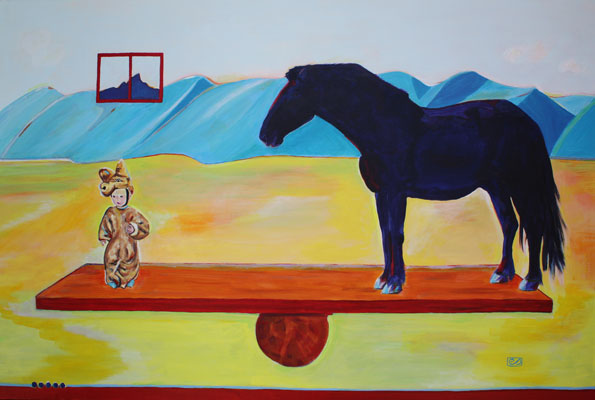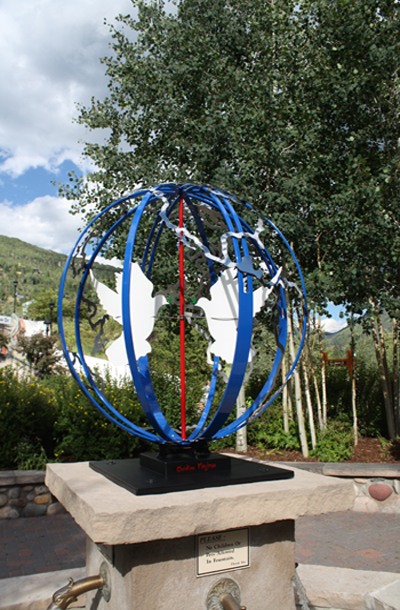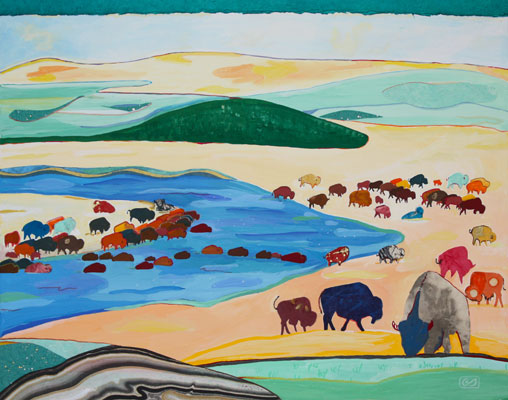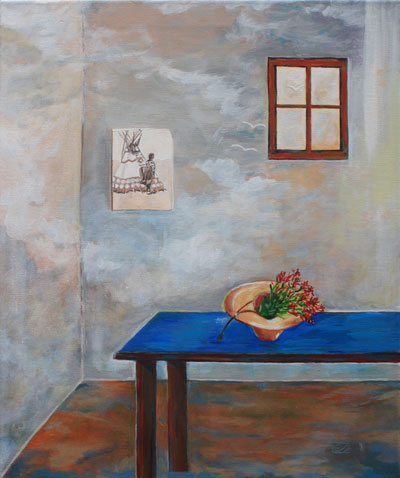
I finished painting Village Clydesdale and Little Coyote in July 2013.
The idea came to me when I watched six big, black Clydesdale grazing in a small pasture by Shooting star golf course at Teton Village. I took pictures of them. They stood still in the hot sun of early fall (2012). Some stood motionless, eyes closed, one back foot relaxed, hoof bent. One Clydesdale particularly intrigued me. He seemed to meditate, eyes barely shut, mouth soft as if smiling, yet he was alert to every noise.
And so came the idea:
What would happen if such a big horse were on a balance board with a small child disguised as a coyote? Horses don’t like coyotes, but most horses understand the innocence of small children.
The small child would not think twice. He would step on the balance board and wait for the horse to play his part in the game.
The horse would make himself light, so light that his weight would equal the young child’s weight…As in the realm of pure meditation: mind over matter. He would not fear the coyote. He would understand that the coyote is just the idea of a coyote. A disguise. The horse would play the game and let the small child believe that yes of course, a draft horse can be as light as a young boy and keep a board balanced on a log. The horse’s ears are flattened back. He is slightly nervous, slightly uncomfortable, but for the child’s joy he will master his uneasiness.
The window is a metaphor for seeing beyond, through a device that allows a different view, a different perception, a unique perspective.
If a window were placed on a mountain ridge could we see the mountain differently? Could we see the summit it leads to outside the frame?
The colors are the colors of childhood, light and bright, irrelevant to reality.
 I designed the Peace Globe as a response to all the terrorist acts that destroy lives and hopes in the world.
I designed the Peace Globe as a response to all the terrorist acts that destroy lives and hopes in the world.



